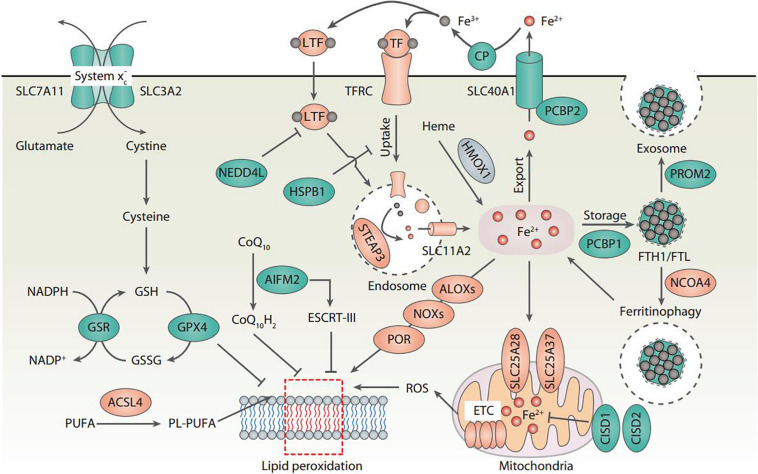FIGURE 1.
Core molecular mechanisms of ferroptosis. Ferroptosis is a type of oxidative cell death that can cause lipid peroxidation and membrane damage. Many oxidative and antioxidant pathways affect the ferroptotic reaction. In particular, system xc–-mediated cystine uptake and subsequent cysteine production are required for GSH biosynthesis, which further enhances the anti-lipid peroxidation activity of GPX4. The inhibition of SLC7A11 and GPX4 leads to the accumulation of iron-dependent lipid peroxidation, thus causing ferroptotic cell death. The activation of ALOX, NOX, or POR promotes lipid peroxidation, whereas the activation of the ESCRT-III complex repairs damaged membranes during ferroptosis. Importantly, all aspects of iron metabolism, including iron absorption, storage, export, and utilization, have an important regulatory effect on ferroptosis.

